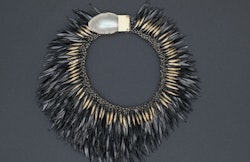
Discover
Discover new artists, articles and other craft related topics. Use the tags to search all contents.
Jewellery and adornment

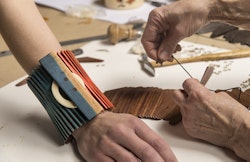
Liv Blåvarp: Touch Wood

The Innermost Corner of the Outermost Layer – an interview with Renate D. Dahl, Judit Fritz, and Lauren Kalman
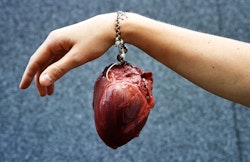
Nanna Melland: The Uniqueness of the Masses
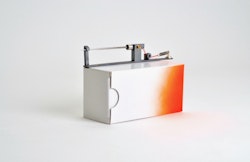
Sigurd Bronger: Jewellery as Absurd Theater
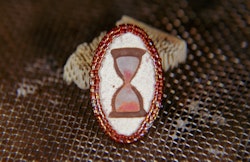
Jewellery Thoughts of Impermanence

Felieke van der Leest: Toy Animals, Yarn, and Glamorous Design
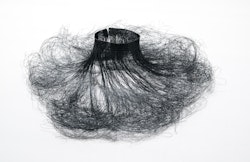
Inger Blix Kvammen: Memories in Metal
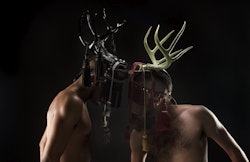
Recognizing Ground: Where Indigenous and Queer Practices Meet
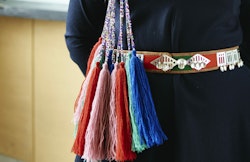
Baarkaldahke – A Living Cultural Legacy
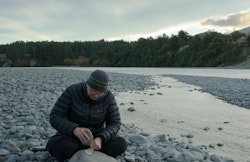
Texture of Practice: Areta Wilkinson

Jewellery Thoughts of Impermanence

The Innermost Corner of the Outermost Layer – an interview with Renate D. Dahl, Judit Fritz, and Lauren Kalman
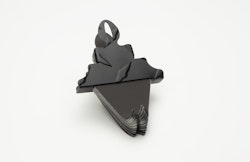
The World-Shifting Qualities of Adornment
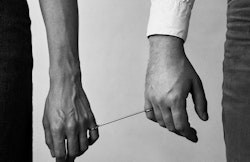
With this Ring – An Essay Celebrating the Symbolic Meaning of Jewellery

Tattoo Archaeology
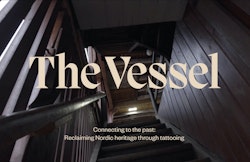
Connecting to the Past: Reclaiming Nordic Heritage through Tattooing

Inuit Tattoo Traditions and the Complexities of a Revival
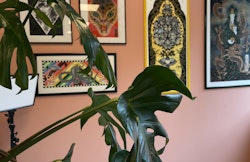
Part Psychologist, Part Mind Reader, Part Artist
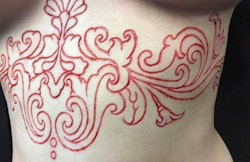
Art that hits a nerve

I'm Interested in Creating Superbeings
Excellence in Craft
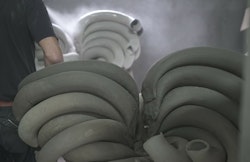
Torbjørn Kvasbø: Ceramic Expressionism
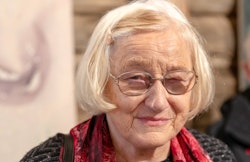
Weaving the Wild: the Work of Brit Fuglevaag

Tone Vigeland: Hands on

Liv Blåvarp: Touch Wood
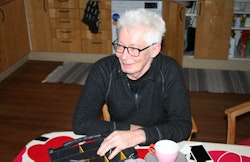
Perisak Juuso
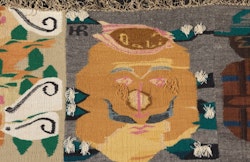
Hannah Ryggen's Popularity
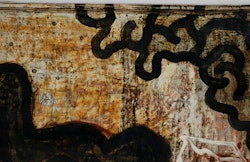
Marit Tingleff: Serving up Stories with Chances
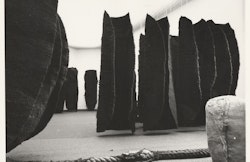
Magdalena Abakanowicz and the Norwegian Art Scene: Style Creator or Liberating Role Model?

Art that hits a nerve
In this text, Marita Wikstrøm Svěrák introduces us to the field of body piercings, scarification, and body suspension. She explains the craftsmanship behind the different practices, as well as her fascination with scars and the importance of pain. Throughout the text, the artist gives insight into the social and psychological part of her work and explains how it is deeply embedded within her practice.

With this Ring – An Essay Celebrating the Symbolic Meaning of Jewellery
In this essay by Julia Wild and Katharina Dettar, we are invited to contemplate jewellery as a means of communication, directed both inward and outward. Taking the wedding ring as an example, Wild and Dettar investigate its significance in relation to identity, status, materiality, absence, and loss.

The World-Shifting Qualities of Adornment
In this essay, Vivi Touloumidi discusses wearable signs and adornment, their ability to carry sociopolitical messages, and the impact they can have on forming subjects and identities. By researching the black triangle, a symbol used during WWII to oppress and categorise so-called “asocials”, Touloumidi found a way to investigate the world-shifting qualities of adornment, and the power of subverting symbols of oppression as badges of honour and protest.

The Innermost Corner of the Outermost Layer – an interview with Renate D. Dahl, Judit Fritz, and Lauren Kalman
In an interview with three artists, Johanna Zanon explores the theme of the relationship between the body and metal art and jewellery. Renate D. Dahl's work focuses on questioning the social norms and standards associated with the female form. Judit Fritz works at the intersection of crafts and sciences, experimenting with using sweat and tears to grow gemstones. Finally, Lauren Kalman uses craft-based materials in her performance-based videos, photographing and distorting the body in sometimes grotesque and violent ways, in order to explore attraction and repulsion.

Jewellery Thoughts of Impermanence
In this text, artist Olaf Hodne questions the presupposed permanence of jewellery, and introduces us to three artists, Sayo Ota, Íris Elva Ólafsdóttir, and Kristine Ervik, whose practices embrace perishable materials, making art jewellery not made to last.

Recognizing Ground: Where Indigenous and Queer Practices Meet
Recognizing Ground: Where Indigenous and Queer Practices Meet is a conversation between artists matt lambert and Máret Ánne Sara about shared experiences, migration, nomadism and land.

Sigurd Bronger: Jewellery as Absurd Theater
For many years Sigurd Bronger was an outsider in contemporary art jewellery, but now he enjoys increasing attention. In this interview by Reinhold Ziegler we learn about Bronger's way to jewellery, and how expressing absurdity has become his hallmark.

Felieke van der Leest: Toy Animals, Yarn, and Glamorous Design
Plastic toy animals, crocheting in yarn, and precious metals, are some of the elements Felieke van der Leest combines to make exciting, humorous, and absurd jewellery. Central to van der Leest's artistic practice is a fascination with the animal kingdom. Using toys and ready-mades she transformers animal figurines into near-human subjects, complete with clothes and sunglasses. In this interview by André Gali we learn more about her approach to making jewellery.

Nanna Melland: The Uniqueness of the Masses
Nanna Melland is known for making jewellery with unorthodox materials. In this interview by Monica Holmen we are introduced to her practice which spans from personal jewellery to public installations.

Liv Blåvarp: Touch Wood
Artist Liv Blåvarp creates spectacular and sculptural necklaces and bracelets out of wood. Her creations are built by individually shaping smaller pieces of wood and joining them together in a spiraling construction, for maximum wearability. In this interview by Reinhold Ziegler we learn more about how Blåvarp came to work with wood, and how she developed the technical competence to create wearable pieces of art.

Tone Vigeland: Hands on
'Tone Vigeland: Hands on' is an interview with the jewellery artist Tone Vigeland by Reinhold Ziegler. Tone Vigeland’s art springs from a direct encounter between her hands and her materials. For more than fifty years, she has created jewellery and sculptures that combine simple craft techniques with stringent aesthetics – works apparently liberated from any possible intellectual approach. Perhaps this is why people the world over describe her art as both timeless and placeless, and sometimes even magical.